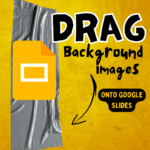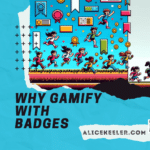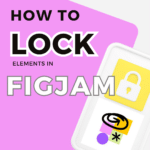Guest Post by Victoria Thompson

Interaction, Engagement, & Inquiry
As a first year instructional coach it has been very interesting conducting this role in a virtual learning environment. So much of what we do in our classrooms when we are face to face hinges on interaction, engagement, and inquiry. This could easily get lost online. I’m happy to say that I have seen so much innovation and collaboration in the past two weeks that we have been in school.
In its essence, we cannot treat a virtual learning environment the same way that we would a face to face classroom. Approaches and procedures should be adjusted and modified accordingly. In a virtual world, how would we be able to modify some of the strategies that we would use in a face to face classroom to increase engagement and shake things up so that students are not just listening to a teacher or staring at a screen for the entire class period?
In its essence, we cannot treat a virtual learning environment the same way that we would a face to face classroom.
Victoria Thompson
Three successful techniques I have observed:
1.) Quick draw: This was one of my favorites that I observed in a virtual art classroom, but I think that it has so much possibility to be a cool warm up for nearly any subject. The teacher gave a prompt (in this case, it was “what is that sound and where is it coming from?”) and the students drew their response to the prompt for five minutes, which was monitored with a five minute timer. This was done in their sketchbooks. I participated in this activity and had a blast. It was nice to start the class with a free draw and really use imagination as the first task of the day. When the five minutes were up, students had the option to either turn on their cameras (if they elected to turn them off) and share their drawing or take a picture of it with their device and drop it into the Collaboration space of OneNote Class Notebook for the class to observe and give feedback. Such a cool way to integrate technology and creativity into the classroom without a camera mandate. As a STEM coach I can see this type of prompt-and-draw working wonders with engineering (“what could this be used for?”), math (“what are congruent triangles?”), and science (“where is that bright light coming from?”). Just like Google’s Director of STEM Education Strategy, Kamau Bobb, I believe that the use of technology to capture and share drawings aligns with the integration of technology in STEM education. It familiarizes students with digital tools and platforms, which are essential in today’s STEM-related careers.
2.) Visual activator: A visual activator can be used in a variety of different ways, and it’s exactly how it sounds: a picture that activates your thinking. Typically, a picture is shown and there are accompanying questions that follow that students will need to answer. Students can answer their questions in the chat feature, verbally, or on a note catching app like Padlet, Jamboard, or OneNote Class Notebook. They are also welcome to take down notes individually as well if they’d like to share out with the class.
Visual activators are also a very good way to take attendance, or even give wait time for students to get signed in to class so you can take attendance. As students respond you can mark off that they are in class. Recently I gave a visual activator in a STEM professional development that I was helping co-facilitate, and the responses to the visual activator were used as an attendance marker. I took a picture of my baking supplies and that was the activator for today. For their attendance question, they needed to answer one of the following:
- What do you notice?
- What do you wonder?
- Can the items in this picture be used for a project?
- Is there anything missing from this picture that could complete a project?
I also encouraged my participants to create their own visual activators! By either grabbing objects around their living space or from outside, they created their own activators and generated questions based on what was seen and then posted them to whatever platform they are using. My favorite one was a group of chewed dog toys and the question to be answered was “What do you think happened here?”. This is something you could do with students as well–it gets them away from the screen and moving about. If they don’t have any camera ready objects in their home, I’ve also had success doing this with finding random photos on the internet and asking for students/participants to construct a paragraph long story from what they see.
3.) “What’s your favorite…”: This one is pretty common. You ask students what their favorite “thing” is; that thing could be ice cream or their favorite color or their favorite television show or their favorite animal or either favorite whatever. I’ve usually seen this done in the very beginning or very end of class as a warm up or as an exit slip. Students typically respond verbally or in the chat box of whatever video conferencing platform they are using (we are using Zoom); however, I’m really enjoying when teachers and students work on questions like this in apps like Padlet or Jamboard. Students can comment themselves, as well as respond to others and “like” posts the same way you would do on social media. By asking questions about what they like and who they are it brings an element of authenticity to the forefront of the class and gives you a chance to learn more about who they are, even in a virtual setting.
So…which one will you choose?

About the Author
Victoria Thompson is a STEM Integration Transformation Coach based in Seattle, WA. She moved to the area in 2018 with her wife Kourtney, where her career has pivoted to focusing on K-12 mathematics instruction with research on decolonizing mathematics curriculum for teachers and learners, creating inclusive math environments, and using technology to bridge equity gaps in math education. She is a certified Microsoft Innovative Educator, a National Geographic Educator, an Apple Educator, an InsPEARational Educator, and an educational technology consultant for tech companies in the Seattle area.







